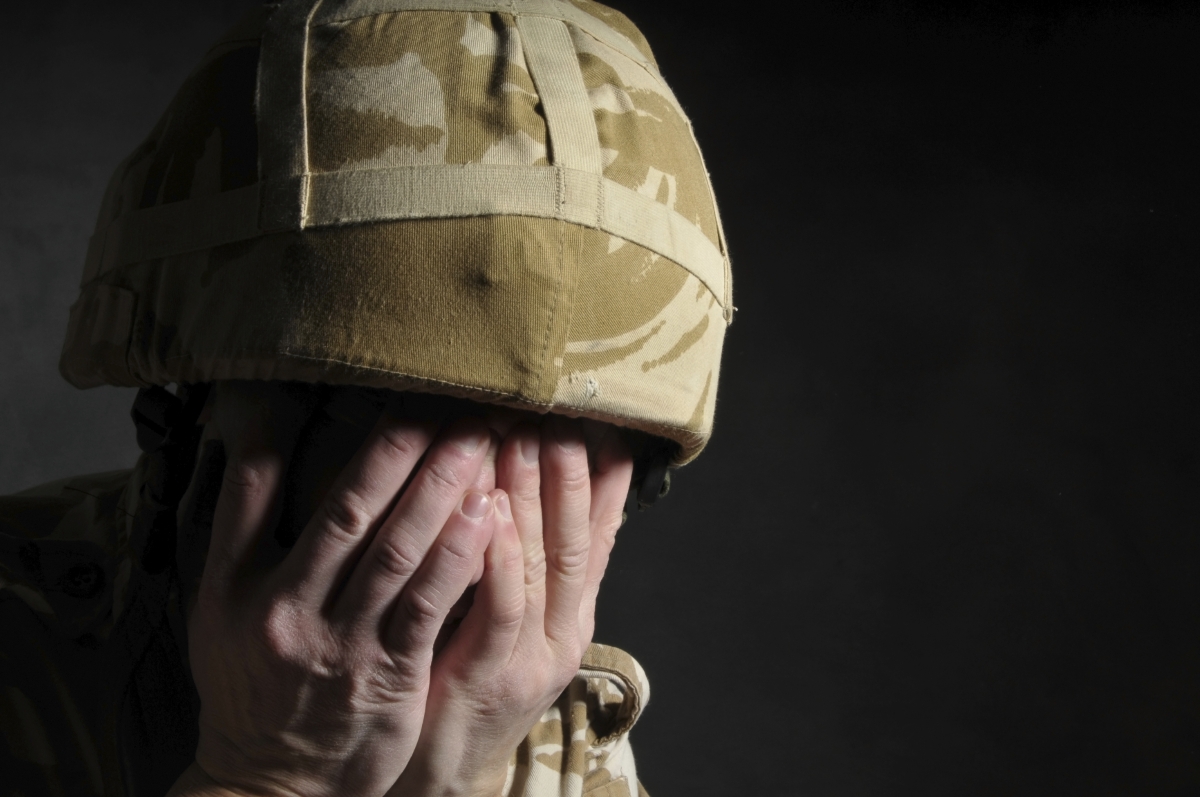
Four Times as Many Soldiers Die from Suicide than from Combat
Meghann Myers / Military Times
(June 22, 2021) — The suicide rate among active-duty troops and veterans has outpaced the also-rising rate in the general population in recent years, but with so many risk factors inherent to military life, it’s difficult to pin down why.
There’s no one reason for it, according to a study released Monday by the Costs of War Project, and the way the Defense Department and VA track suicides might mean even their growing numbers are incomplete.
“The report notes that the increasing rates of suicide for both veterans and active duty personnel are outpacing those of the general population ― an alarming shift, as suicide rates among service members have historically been lower than suicide rates among the general population,” according to a news release.
Per researchers’ estimates, 30,177 Global War on Terror veterans have died by suicide, compared to 7,057 who have died while deployed in support of the Global War on Terror.
There are myriad stressors endemic not only to combat deployments, but also to military service, that may contribute to the rising suicide rate.
“There are clear contributors to suicidal ideation like high exposure to trauma — mental, physical, moral, and sexual — stress and burnout, the influence of the military’s hegemonic masculine culture, continued access to guns, and the difficulty of reintegrating into civilian life,” according to the report. “In addition to these factors, it is imperative we also consider the impact of the military’s reliance on guiding principles which overburden individual service members with moral responsibility, or blameworthiness for actions or consequences, over which they have little control.”
The report explores a wide variety of factors, some as straightforward as the trauma of combat, but also others, such as advancements in health care that have not only allowed more troops to survive injury, but allowed them to continue to deploy over and over, racking up more physical and mental trauma.
“For example, since the post-9/11 wars began, we have seen a tremendous rise of improvised explosive devices (IEDs) in warfare, significantly increasing the number of traumatic brain injuries (TBIs) and polytrauma cases among service members,” according to the report. “TBIs have affected as many as 20 percent of post-9/11 service members, with many experiencing more than one during their career.”
Twenty years of combat operations might also be a factor.
“Simultaneously, the length of the war and advances in medical care have allowed service members to redeploy after severe physical trauma,” according to the report. “These compounding traumas contribute to worsening suicide rates as service members deploy and redeploy after sustaining severe injuries.”
And even for those who haven’t been injured, or even seen a firefight, the constant fear of IEDs is enough to seed post-traumatic stress that can be more and more of a problem down the line.
But deadly deployments are still not a satisfactory explanation, according to the report. Combat deaths have been falling steadily since 2007, the study notes, as suicide rates have continued to rise.
And numbers of troops deployed to Iraq and Afghanistan have dwindled from hundreds of thousands to just a few thousand troops, the DoD reported some of its highest suicide rates in 2018, 2019 and 2020.
There’s also the general demands of military life to consider, from long hours and separations from families to, notably, the prevalence of sexual trauma.
There’s also a culture that values pushing distress aside in service of the group, putting the mission above any one person’s needs,despite a decade of ever-increasing research, support and an attempt to de-stigmatize struggles with mental health.
“Military life is exhausting, and the high operational tempo limits time for reflection,” according to the report. “Further, the dominant masculine identity that pervades the military is one that overwhelmingly favors machismo and toughness. Asking for help during trauma or suicidal ideation, then, is necessarily at odds with military culture; ‘acknowledging mental illness is likely to be viewed as a sign of weakness and a potential threat to their careers.’ “
Even so, there is a disconnect somewhere, between currently serving troops and veterans.
DoD data shows that the majority of active-duty suicides are carried out by service members who have never deployed. Suicides among veterans, however, are much more common for those with combat experience.
It’s possible, then, that the snowballing effects of post-traumatic stress and traumatic brain injuries ― two key risk factors for suicide ― might not come to a head until after a service member has separated, when their sense of belonging and mission gives way to a search for a new identity, where many feel isolated from their civilian friends and family.
“The VA 2020 National Veteran Suicide Prevention Annual Report reveals the suicide rate of veterans overall and adjusted for age and sex is 1.5 times that of the general population,” according to the report. “This rate is likely a conservative one because, unlike earlier reports, the VA only counts veterans who were federally activated, leaving out reservists and National Guardsmen who were not federally activated.”
Similarly, DoD’s numbers may be off for active-duty suicides, “by as much as half,” according to the report, because of the way it investigates and determines whether a death is a suicide.
“For example, the DoD may not count overdoses, single-vehicle wrecks, weapon misfires, and the like as completed suicides; reconstructing a narrative of suicide is prone to error,” according to the report.
While the Defeat ISIS mission will continue in Iraq, the end of the war in Afghanistan might give the services a chance to reset and reevaluate.
“The military needs to promote help-seeking attitudes and frame them positively,” according to the report. “Accordingly, medical screenings for PTSD, TBIs, depression, and suicidal ideation must be universal, communicated across all channels, and taken seriously. That polytraumas and repeated TBIs are so commonplace should motivate changes in if and how service members are redeployed.”
Combat Experiences (Like Killing Civilians)
Closely Linked to Suicide, Study Finds

Meghann Myers / Military Times
(February 19, 2021) — Though research has found that most service members who die by suicide have never deployed to combat, that doesn’t show the whole picture. A recent military study found that some combat experiences, especially when coupled with PTSD or depression, are a risk factor in suicide attempts.
Combat in general didn’t translate to more attempts, the Naval Health Research Center found, but high-intensity situations like ambushes, or inadvertently killing a non-combatant, were more linked to suicidal ideation.
“This study suggests that deployed service members who experience high levels of combat or are exposed to certain types of combat experiences (involving unexpected events or those that challenge moral or ethical norms) may be at an increased risk of a suicide attempt, either directly or mediated through a mental disorder,” according to the report.
A decade of research and tracking of military suicides has created a stereotype of service members who die by suicide: young, male, white, typically on his first enlistment and with no deployments, going through some type of financial or relationship distress.
While that profile is statistically accurate, the NHRC study sought to drill down on combat experience, which is heavily linked with post-traumatic stress, though not the most common factor in suicide attempts.
The study looked at the mental health histories of nearly 58,000 Iraq and Afghanistan veterans, enrolled between 2001 and 2013, who completed a survey about their experiences every three to five years after enrollment.
Of those, the study found, 235 attempted suicide during the reporting period, while another 26 died by suicide.
While any experience with combat is generally associated with suicide attempts, according to the report, the researchers removed mental health history from the equation.
Essentially, they were looking to see if aspects of combat contributed directly to suicide attempts, without the additional factor of a behavioral health diagnosis.
“It has been well established that combat is associated with increased risk of po
What they found is that killing a civilian, seeing human remains or being ambushed were the experiences most linked to a suicide attempt, whether the service member later sought behavioral health treatment or not.
“Although it is difficult to know why certain experiences have a stronger association with attempting suicide than other experiences, clinicians may want to consider factors, such as the sudden, unexpected nature of certain events and feelings of helplessness or loss of control (e.g., being attacked or ambushed; seeing dead bodies or human remains), compared with more active engagements, such as clearing or searching homes or buildings,” the report found. “Repetitive exposure to death over time may also be associated with an acquired capability for suicide.”
Researchers recommended that those treating troops for depression, anxiety or PTSD ask patients for specifics about their combat experience, looking for particularly dangerous triggers, like having killed a civilian, especially when coupled with a depression diagnosis.
And, having reconfirmed that combat experience can indirectly lead to suicide when PTSD is present, “these findings emphasize the continued importance of identification and treatment of PTSD and comorbid PTSD and depression,” they said.
st-deployment mental disorders and that mental disorders are associated with increased risk for suicidal behaviors, but only a limited number of studies have examined this indirect association,” according to the report.
Meghann Myers is the Pentagon bureau chief at Military Times. She covers operations, policy, personnel, leadership and other issues affecting service members.
Related News
“Military Suicides Up as Much as 20% in COVID Era,” The Associated Press.
Military suicides have increased by as much as 20 percent this year compared to the same period in 2019, and some incidents of violent behavior have spiked as service members struggle under COVID-19, war-zone deployments, national disasters and civil unrest.
Posted in accordance with Title 17, Section 107, US Code, for noncommercial, educational purposes.